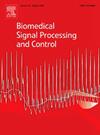Prediction of colorectal cancer microsatellite instability and tumor mutational burden from histopathological images using multiple instance learning
IF 4.9
2区 医学
Q1 ENGINEERING, BIOMEDICAL
引用次数: 0
Abstract
Recent advancements in deep learning have enabled the prediction of microsatellite instability (MSI) and tumor mutational burden (TMB) status of colorectal cancer (CRC) patients using whole slide histopathological images (WSIs). However, current methods suffer from poor prediction accuracy and lack interpretability, which hinders their clinical application. To address this, we propose a new cascaded two-stage multiple instance learning (MIL) method called CasNet for predicting MSI and TMB. CasNet employs a supervised ResNet model to extract informative image features from patches within the WSI. It then evaluates the importance of each patch using a gradient-based class activation graph (Grad-CAM) and an attention mechanism. On the CRC dataset from the cancer genome atlas (TCGA), CasNet achieved an area-under-the-curve (AUC) of 0.909 for predicting MSI status and a mean AUC of 0.8818 in 5-fold cross-validation for TMB prediction, outperforming seven other state-of-the-art methods. Furthermore, we demonstrate the robustness of CasNet by achieving AUC scores of 0.88 and 0.84 for MSI and TMB predictions, respectively, using only 40% of the samples for training. To enhance the interpretability of CasNet, a segmentation method based on Hover-Net is utilized to analyze the differences in cell content between MSI and MSS groups. Overall, CasNet is an accurate and interpretable method for predicting MSI and TMB, making it a promising in predicting biomarkers even with limited training data.
求助全文
约1分钟内获得全文
求助全文
来源期刊

Biomedical Signal Processing and Control
工程技术-工程:生物医学
CiteScore
9.80
自引率
13.70%
发文量
822
审稿时长
4 months
期刊介绍:
Biomedical Signal Processing and Control aims to provide a cross-disciplinary international forum for the interchange of information on research in the measurement and analysis of signals and images in clinical medicine and the biological sciences. Emphasis is placed on contributions dealing with the practical, applications-led research on the use of methods and devices in clinical diagnosis, patient monitoring and management.
Biomedical Signal Processing and Control reflects the main areas in which these methods are being used and developed at the interface of both engineering and clinical science. The scope of the journal is defined to include relevant review papers, technical notes, short communications and letters. Tutorial papers and special issues will also be published.
 求助内容:
求助内容: 应助结果提醒方式:
应助结果提醒方式:


